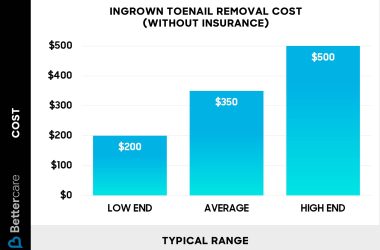Living in a group home can be a supportive option for individuals needing specialized care. So, how much does it cost to live in a group home? The answer varies depending on location, amenities, and level of care provided. In this article, we’ll delve into the factors that influence the cost of residing in a group home, helping you gain a better understanding of the financial implications associated with this housing option. Let’s explore the details together.
How Much Does It Cost to Live in a Group Home
Welcome to our blog post where we will discuss the important topic of how much it costs to live in a group home. Group homes provide housing and support services for individuals who may need assistance with daily living activities. Whether you are considering living in a group home yourself or have a loved one who might benefit from this type of living arrangement, understanding the costs involved is crucial. Let’s dive into the details to help you better understand the financial aspects of living in a group home.
The Basics of Group Homes
Group homes are residential facilities that offer a supportive living environment for individuals who require assistance with activities of daily living, such as personal care, meal preparation, medication management, and transportation. These homes are designed to provide a sense of community and support for those who may not be able to live independently due to physical, cognitive, or developmental challenges.
Factors Influencing the Cost of Living in a Group Home
When it comes to determining the cost of living in a group home, several factors come into play. These factors can vary depending on the location of the group home, the level of care and services provided, and the specific needs of the residents. Let’s take a closer look at some of the key factors that can influence the cost of living in a group home:
1. Location
The location of the group home plays a significant role in determining the cost of living. Group homes located in urban areas or regions with a higher cost of living may have higher monthly fees compared to those in rural areas. The availability of local services and amenities can also impact the overall cost.
2. Level of Care
The level of care and support provided in a group home can greatly affect the cost. Some group homes offer basic assistance with daily tasks, while others provide more intensive medical care and supervision. The more specialized the care, the higher the cost is likely to be.
3. Amenities and Services
Group homes may offer a range of amenities and services to enhance the quality of life for residents. These can include recreational activities, therapy services, transportation assistance, and meal preparation. The availability of these additional services can influence the overall cost of living in a group home.
Understanding the Cost Structure of Group Homes
Group homes typically charge residents a monthly fee to cover the cost of housing, food, utilities, and care services. The cost structure varies from one facility to another, but most group homes operate on a flat-rate or tiered pricing model. Here are some common components of the cost structure of group homes:
1. Room and Board
The room and board fee covers the cost of accommodation, including a private or shared bedroom, common living areas, and meals. This fee can vary depending on the size and configuration of the living space provided.
2. Care Services
Care services include assistance with activities of daily living, medication management, personal care, and medical supervision. The cost of care services is typically based on the level of support needed by the resident and may be charged as an additional fee on top of the room and board.
3. Additional Fees
In addition to room and board and care services, residents may incur additional fees for specialized therapies, transportation services, and recreational activities. It’s essential to inquire about any extra charges that may apply when considering a group home for yourself or a loved one.
Financial Assistance Options for Group Home Living
For individuals who require financial assistance to cover the cost of living in a group home, there are several options available. Government programs, Medicaid waivers, and other funding sources can help offset the expenses associated with group home living. Here are some financial assistance options to consider:
1. Medicaid
Medicaid is a state and federally funded program that provides health coverage for eligible individuals with low income. Many group homes accept Medicaid as a form of payment for care services, making it an essential resource for those in need of financial assistance.
2. Supplemental Security Income (SSI)
SSI is a federal program that provides monthly cash benefits to individuals who are aged, blind, or disabled and have limited income and resources. Eligible individuals may use SSI benefits to help cover the cost of living in a group home.
3. Private Insurance
Some private health insurance plans may offer coverage for long-term care services, including those provided in group homes. It’s essential to check with your insurance provider to determine what services are covered and how to make the most of your insurance benefits.
In conclusion, the cost of living in a group home can vary based on several factors, including the location, level of care, amenities, and services offered. Understanding the cost structure of group homes and exploring financial assistance options can help individuals and their families make informed decisions about group home living. If you or a loved one are considering a group home as a living option, it’s essential to research and compare different facilities to find the best fit for your needs and budget. Remember, financial assistance is available to help make group home living more affordable for those who qualify.
We hope this article has provided valuable insights into the cost of living in a group home and the financial options available to support this type of living arrangement. If you have any questions or would like to share your experiences with group home living, feel free to leave a comment below. Thank you for reading!
How to Start a Group Home Business 2025 ( Complete Details ) #grouphome
Frequently Asked Questions
What factors influence the cost of living in a group home?
The cost of living in a group home can vary based on several factors, including location, amenities provided, staffing levels, and the specific services offered by the group home. Additional factors such as the size of the room or apartment, level of care needed, and any additional personalized support can also impact the overall cost.
Are there government assistance programs available to help cover the cost of living in a group home?
Yes, there are government assistance programs available that can help individuals cover the cost of living in a group home. Programs such as Medicaid, Supplemental Security Income (SSI), or other state-specific programs may offer financial assistance to help offset the expenses associated with residing in a group home.
What are some common additional costs associated with living in a group home?
Some common additional costs that individuals may encounter when living in a group home include medication expenses, transportation fees, personal care items, social activities, and any specialized therapies or treatments not covered by insurance. It’s essential to inquire about additional costs beyond the basic room and board fees to ensure proper budgeting.
Final Thoughts
Living in a group home can be an affordable option for those in need of support. Costs vary depending on location, services offered, and funding sources. Generally, expenses cover accommodation, meals, utilities, and support staff. Individuals should inquire about all costs and available financial assistance. Overall, understanding how much it costs to live in a group home is crucial for making well-informed decisions about long-term care options.












